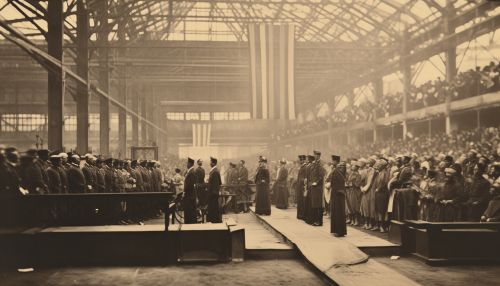Xinhai Revolution
Background
The Qing Dynasty, the last imperial dynasty of China, ruled from 1644 to 1912 with a brief, abortive restoration in 1917. It was preceded by the Ming Dynasty and succeeded by the Republic of China. The multiethnic Qing empire lasted for almost three centuries and formed the territorial base for modern China. It was the fifth largest empire in world history in terms of territorial size.


Causes of the Revolution
The Xinhai Revolution was caused by a combination of factors, including economic instability, foreign imperialism, and traditional Chinese social issues. The Qing Dynasty was in a state of economic decline by the late 19th century. The government was corrupt and inefficient, and the dynasty was unable to effectively manage the vast territory of China.
The Opium Wars with Britain and France in the mid-19th century had resulted in the loss of China's economic sovereignty. In the aftermath of these wars, China was forced to sign a series of unequal treaties that favored foreign powers. This led to a rise in anti-foreign sentiment among the Chinese populace.
Traditional Chinese society was also undergoing significant changes during this period. The Confucian social hierarchy, which had been the backbone of Chinese society for centuries, was being challenged by new ideas and social movements. The introduction of Western ideas and technology had a profound impact on Chinese society, leading to a clash between traditional and modern values.
The Revolution
The Xinhai Revolution began with the Wuchang Uprising on October 10, 1911. The uprising was led by members of the Tongmenghui, a revolutionary group founded by Sun Yat-sen. The revolutionaries sought to overthrow the Qing Dynasty and establish a republic in China.
The Wuchang Uprising was initially successful, and the revolution quickly spread to other parts of China. By the end of 1911, 15 provinces had declared their independence from the Qing Dynasty.
In January 1912, the Qing court announced the abdication of the six-year-old Emperor Puyi, marking the end of over 2,000 years of imperial rule in China. The Republic of China was officially established on January 1, 1912, with Sun Yat-sen as its provisional president.


Aftermath and Significance
The Xinhai Revolution marked a significant turning point in Chinese history. It ended over two millennia of imperial rule and marked the beginning of China's modern era. However, the revolution did not immediately lead to stability and prosperity. The early years of the Republic were marked by political instability and warlordism.
The Xinhai Revolution also had a profound impact on the Chinese diaspora. The revolution and the establishment of the Republic were seen as a symbol of Chinese nationalism, and they inspired Chinese communities around the world to fight for their rights and freedoms.
Despite its significance, the Xinhai Revolution is often overshadowed by the later Chinese Communist Revolution and the establishment of the People's Republic of China. However, the Xinhai Revolution played a crucial role in shaping modern China and continues to be a topic of study for historians and scholars.
